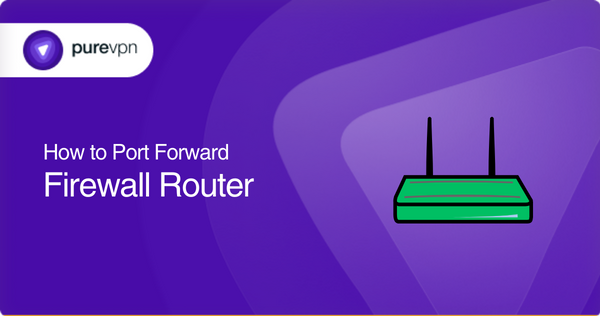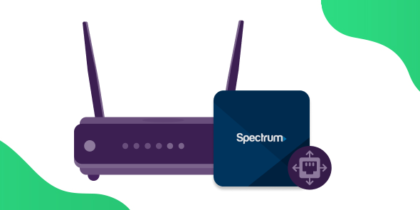Table of Contents
Are you trying to set up a port-forward firewall router? If yes, Then you’re in luck because we are here to help. Configuring a port-forward firewall router may seem intimidating, but it doesn’t have to be.
You can establish secure, stable network connections with the correct instructions and information. Let’s look at Port Forward firewalls and routers – what they are, why they’re essential, and how to configure them.

Requirements for Port Forward Firewall Router
Before you move forward with port forwarding, make sure you have the following:
- The IP address of your router.
- The IP address of your device.
- TCP and UDP port numbers.
How to set up a Port Forward Firewall Router
To set up a Port Forwarding firewall router, follow these steps:
- Locate the IP address of your router.
- You can find this information in the user manual that came with your router or by doing a simple online search.
- Access the settings, navigate to the “Port Forwarding” section, and open it up.
- Select “add a new Port Forwarding rule” and select the protocol type you want to use for your network.
- Enter an internal port for the public port and then enter an IP address for your device and any other required fields in this section.
- Once you have completed all the information, click “Save Settings.”
- Save all changes to your router’s settings, and you are ready.
Your Port Forward firewall router is now easy to configure, so sit back and enjoy peace of mind.
Ports needed to run Firewall Router
- Port 80 (HTTP)
- Port 443 (HTTPS)
- Port 22 (SSH)
- Port 53 (DNS)
- Port 67/68 (DHCP)
- Port 1194 (OpenVPN)
- Port 500/4500 (IPSec)
- Port 123 (NTP)
- Port 161/162 (SNMP)
- Port 514 (Syslog)
Efficiently and securely unblock ports with PureVPN
The process of opening ports can be made simple and uncomplicated using the Port Forwarding add-on.
How to access ports behind CGNAT
Do you find opening ports on your router challenging due to CGNAT used by your ISP? It is a common issue you might struggle with as ISPs frequently use CGNAT to conserve bandwidth and share IP addresses among multiple users on the same network.
Fortunately, there is a solution available! To bypass CGNAT and easily configure port forwarding, you can use a PureVPN port forwarding add-on. It is a fast and straightforward method to resolve this problem. You can learn more about using PureVPN’s Port Forwarding add-on to bypass CGNAT.
PureVPN’s Port Forwarding add-on: A safe solution for unblocking ports
You must use port forwarding if you want sufficient connectivity, better P2P sharing, foolproof security, and greater control or access to remote servers. Router’s operating procedures can get you tangled.
Also, you can experience bandwidth restrictions. Your firewall can also limit your access. This can be quickly solved with PureVPN’s port forwarding add-on. You are just a click away, from bypassing all restrictions, including blacklisting your IP while accessing the port behind CGNAT.
Conclusion
Port forwarding can help you have an amazing online experience but come up with the risk of exposure to a larger public. Be vigilant, and use a cushion to keep yourself protected.
Frequently Asked Questions
Port Forwarding is a process whereby you route the external data requests to the correct destination within a private network. It helps protect sensitive information and ensures data-intensive tasks, like streaming music or video, run smoothly.
Using a Port Forward firewall router increases security by blocking suspicious traffic and providing additional layers of protection for your network. It also allows you to take advantage of faster speeds for streaming services. Finally, it gives an easy-to-manage system for users with multiple devices connected to their network.
Port Forwarding can pose security risks if not appropriately configured by exposing the private network to external threats. It’s essential to use strong passwords, update firmware, and limit access to specific ports to mitigate these risks.



